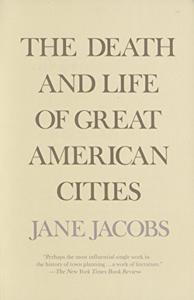
Want to learn the ideas in The Death And Life Of Great American Cities better than ever? Read the world’s #1 book summary of The Death And Life Of Great American Cities by Jane Jacobs here.
Read a brief 1-Page Summary or watch video summaries curated by our expert team. Note: this book guide is not affiliated with or endorsed by the publisher or author, and we always encourage you to purchase and read the full book.
Video Summaries of The Death And Life Of Great American Cities
We’ve scoured the Internet for the very best videos on The Death And Life Of Great American Cities, from high-quality videos summaries to interviews or commentary by Jane Jacobs.
1-Page Summary of The Death And Life Of Great American Cities
Overall Summary
The Death and Life of Great American Cities is a 1961 non-fiction book written by Jane Jacobs, an American-Canadian journalist. The author discusses the city planning process and how it can be improved to make cities more livable.
Jane Jacobs begins her book by criticizing the way city planning is done in the United States. She attacks three major urban movements: The Garden City, The Radiant City, and The City Beautiful.
Part 1, “The Peculiar Nature of Cities,” mainly focuses on the purposes of sidewalks. Sidewalks are used for safety and contact as well as assimilating children into society. Safety is dependent upon clear demarcation between public and private spaces. Sidewalks provide a sense of security because people are protected by those inside buildings and casual onlookers who may be present in the area. Contact among pedestrians helps build trust within communities since they have to interact with one another regularly (e.g., walking past each other). Children should play on sidewalks rather than segregate them from their parents in parks or playgrounds that lack informal surveillance mechanisms found on streets (e.g., casual onlookers). Jacobs also argues that neighborhoods need active participation from their dwellers for success.
Part 2 of the book, “The Conditions for City Diversity,” examines how various mechanisms generate diversity in cities. These mechanisms are economic and include a mixture of uses, short streets that provide more circulation options for their users, buildings that accommodate people with different means, high-density areas that promote vibrant city life, and many others. The combination of all these conditions generates diversity.
Part 3 focuses on four major forces that are negatively impacting cities. The first force is the displacement of people and businesses in one area because they’re being replaced by more affluent people and businesses from other areas. This causes an overall decrease in diversity as well as a cross-effect on neighboring areas. The second force is large single facilities, such as college campuses, which create vacuums around them that become terminuses for generalized use (such as parking lots). The third force is population instability—people moving to or from the city without contributing anything to it—which hinders diversity especially in low-income areas. And the fourth force is money alone, whether private or public, cannot make a city thrive.
Part 4 of the book offers tools for making cities better. These include increasing subsidized housing, improving public transportation and planning districts, salvaging housing projects, and revamping governing. Cities are complex entities with many problems, so a multipronged approach is necessary to fix them.
Chapter 1: “Introduction”
Jane Jacobs begins her book with a critique of the planning process. She then offers solutions to urban problems by analyzing successful cities and offers ideas for improvement. In her medical analogy, she compares orthodox planners to bloodletting doctors who are ineffective in their field.
Jane Jacobs begins by giving a brief history of the most influential ideas underlying orthodox planning. She starts with Ebenezer Howard’s conception of the Garden City, which was taken up in the 1920s by decentrists (a group of American planners). This led to Le Corbusier and his idea for Radiant Cities. The discussion then shifts to Daniel Burnham and his work at the Columbian Exposition in Chicago, which led directly to what became known as City Beautiful Movement. Jacobs ends her instruction with broad dismissal of orthodox planning, calling it “irrelevant”.






